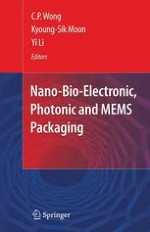2010 | OriginalPaper | Buchkapitel
Nano-Scale and Atomistic-Scale Modeling of Advanced Materials
verfasst von : Ruo Li Dai, Wei-Hsin Liao, Chun-Te Lin, Kuo-Ning Chiang, Shi-Wei Ricky Lee
Erschienen in: Nano-Bio- Electronic, Photonic and MEMS Packaging
Verlag: Springer US
Aktivieren Sie unsere intelligente Suche, um passende Fachinhalte oder Patente zu finden.
Wählen Sie Textabschnitte aus um mit Künstlicher Intelligenz passenden Patente zu finden. powered by
Markieren Sie Textabschnitte, um KI-gestützt weitere passende Inhalte zu finden. powered by
